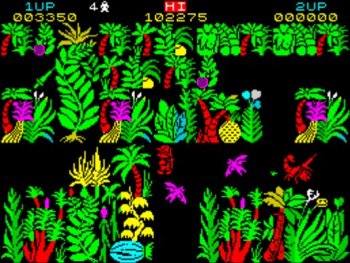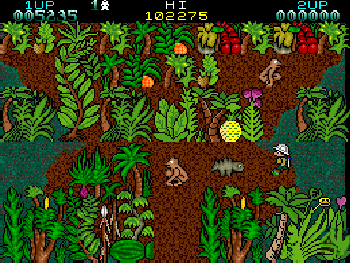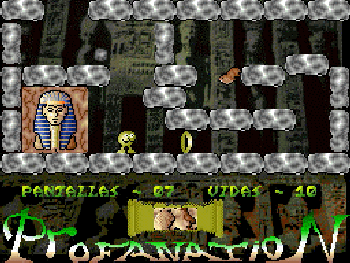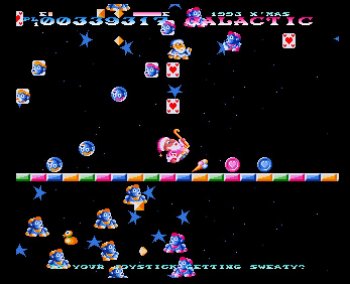|
RE-ISSUE, RE-PACKAGE
Most of the exciting developments in emulation
this month have continued to happen away from the PC (the Xbox, the
Gameboy Advance and the GP32 are the really happening places for
emulation at this precise moment in time), so Emu Zone thought it’d
take a look backwards at one of the most interesting and quirky
developments in the short history of the field, and one which we’d
very much like to see revived one day – Spec256.
In a similar vein to EmuDX, which alert Emu
Zone readers will recall from PCZ issue
119, Spec256 set out
to do a little more than just replicate its target hardware – it set
out to rewrite history the way it should have been in the first
place.
Sir Clive Sinclair’s legendary ZX Spectrum was
the most beloved computer ever found within the borders of Her
Majesty’s United Kingdom, but even its most devoted admirers
couldn’t help but wince at the machine’s primitive palette, which
allowed only eight different colours to ever appear on the screen,
and only two on any one character-sized block. This meant that a
yellow sprite walking across a red-and-white background would either
become red-and-white itself, or would spraypaint the scenery yellow
as it passed, in an ugly blocky shape.
Speccy owners quickly became used to “colour
clash”, and clever programmers learned ways to work around it and
minimise the effects (while stupid programmers just made all their
Spectrum games in monochrome and left it at that). But all the
while, Sinclair users cast jealous glances at the otherwise-inferior
machines that had none of the Speccy’s charm or vast, eclectic
software library, but whose games didn’t look like a stop-frame
movie of a drunken graffiti contest.
“If only”, they pined, “our adored
rubber-keyed wonder had a beautiful 256-colour palette and multiple
colours per character”. And a mere 17 years or so later... well,
you get the idea.
Spec256 worked by imposing an interpretive
layer between the Spectrum emulation and the actual game code,
ensuring that the emulation itself was absolutely true to the
original hardware, but could display the graphics in full
256-colours-no-clashing glory. Interpretation code had to be written
for individual games, but the results, as you can hopefully see from
the screenshots on this page, were stunning, lifting the humble
Speccy to displays of visual prowess that easily rivalled later
16-bit machines of vastly greater power like the Amiga and Atari ST,
and showed off the Speccy’s graphical sharpness to glorious effect.
Sadly, Spec256 fell into disrepair, and you’ll
struggle to even run it on pernickety modern OSes like Windows XP.
But for its HG Wells-esque glimpse of a world that might have been,
it’s worth the effort.
Downloads
|





